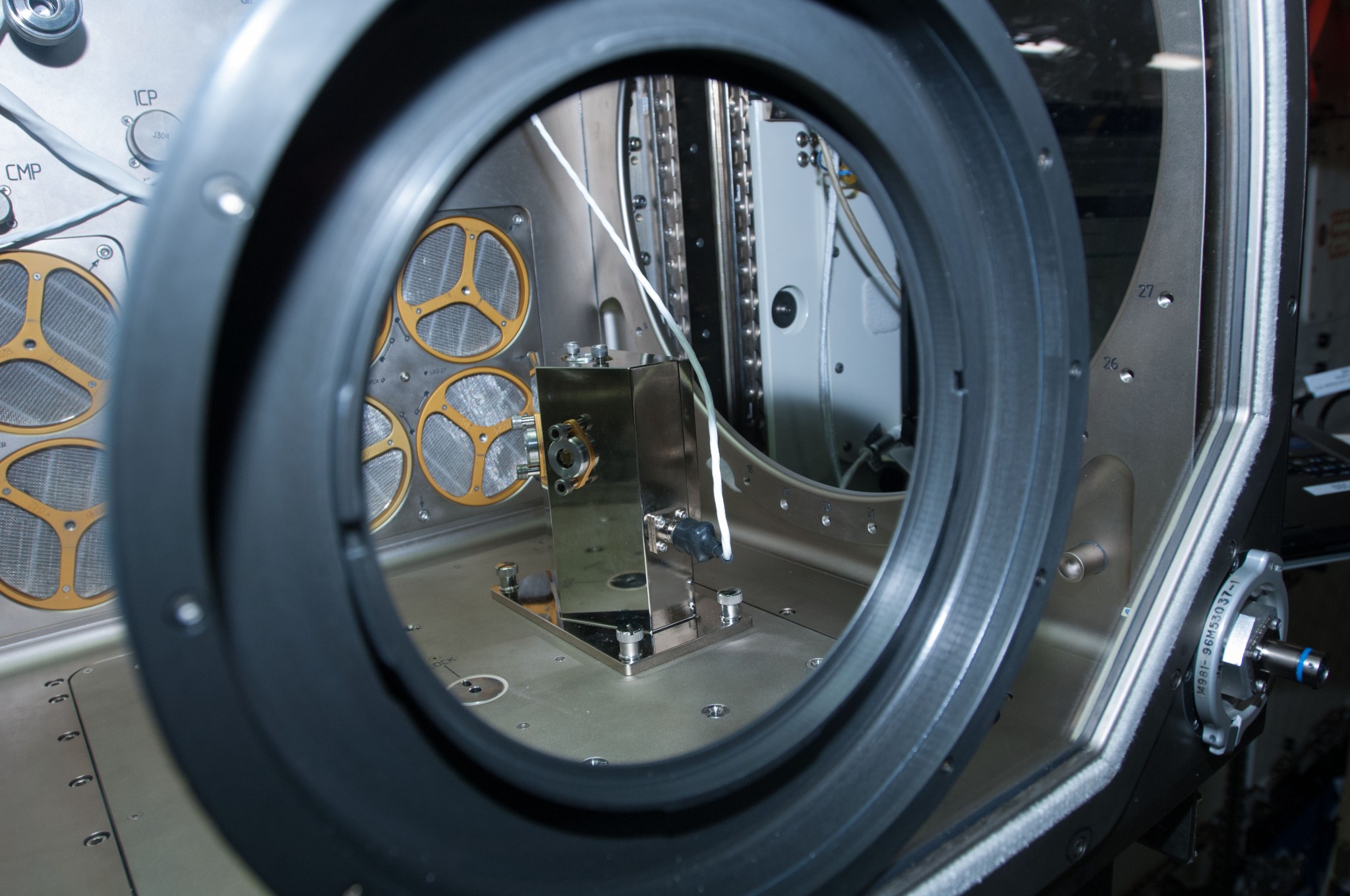Just like eating, drinking and even trying to wash your hair aboard the International Space Station, conducting science experiments in space is not a simple task for astronauts. There are so many more factors for crews to consider than scientists on Earth have to worry about. If not contained, microgravity can turn gasses, dust, fluids and sharp objects into a floating nightmare.
Thanks to the Microgravity Science Glovebox (MSG), those aboard the space station have safely performed science experiments since 2002 without these worries. They conducted hundreds of studies within the sealed, negative pressured, nine-cubic-foot work area, developed by NASA’s Marshall Space Flight Center in Huntsville, Alabama, and the European Space Agency. The crew members put the MSG to good use for a wide range of microgravity research, including fluid physics, combustion science, materials science, biotechnology, fundamental physics and other investigations. This helps researchers looking to understand the role of gravity in basic physical and chemical interactions.
Now NASA will add even more studies to the growing list of MSG participants. With the recent installation of a decontamination system, the facility gains the capability to host an entire additional research discipline — life science. This upgrade was designed and manufactured by Huntsville’s Teledyne Brown Engineering Inc. in partnership with Marshall.
“We are really excited to be able to provide this new system that will enable astronauts aboard the space station the ability to conduct important life science research,” said Lee Jordan, project manager of the MSG at Marshall. “For example, with this system, crews can conduct experiments related to non-human cell biology that we couldn’t do before in the MSG. The work we do aboard the space station is so vital because it helps us discover technologies that can lead to bettering our lives on Earth.”
The decontamination system was designed with crew members’ safety in mind by using high-power, ultraviolet, light-emitting diodes (UV LEDs) to sanitize surfaces inside the MSG. This cleaning process takes only a matter of minutes before and after the crew conducts the experiments. The sanitation process also removes airborne contaminants — such as biological and chemical impurities — and cleans up spills inside the glovebox, providing optimal accommodations for cell science and life science research. It also has an exchangeable glove system that was redesigned to be better suited for these types of studies.
The system is based on the Ultraviolet Germicidal Irradiation (UVGI) method of disinfection where UV light, at sufficiently short wavelengths, is used to kill microorganisms.
“This application of UV has been an accepted practice for disinfection since the mid-20th century,” said Lee. “The DNA of the microorganism is disrupted by the UV radiation, leaving them unable to grow or reproduce. With this technology, it is possible to destroy more than 99.99 percent of all pathogens within seconds, without addition of chemicals, without harmful side effects, inexpensively, highly efficiently and absolutely reliably.”
The UV LEDs incorporated in the system are manufactured by Sensor Electronic Technology Inc. of Columbia, South Carolina, and were developed in part through the Defense Advanced Research Projects Agency Compact Mid-Ultraviolet Technology program in Arlington, Virginia.
“We’re pleased to be able to deliver a system that creates a safer environment to conduct life sciences research,” added Jan Hess, president of Teledyne Brown Engineering Inc. “The results of these studies could lead, for example, to enhanced treatment of infectious diseases and insight into protecting the health of astronauts on long-term space missions.”
The system is available to all biological payloads that operate in the MSG and are concerned about contamination from the air or other previously processed biological payloads.
Rodent research studies will be some of the first experiments to put the decontamination system to work. Rodent Research Hardware and Operations Validation (Rodent Research-1) is scheduled to launch aboard the fourth commercial resupply flight of SpaceX’s Dragon spacecraft.
“[This new study] adds to our research capabilities and maintains our long history of commitment to animal welfare on Earth and in space,” said Ruth Globus, the project scientist for the Research Habitat at Ames. “Not only does NASA follow all federal regulations and requirements that direct the use of animals in research, NASA was the first federal agency to develop a set of ethical principles that further governs its care and use of animals in research.”
The research provides a platform aboard the station for long-duration rodent studies in space that will look at how microgravity affects these model organisms, opening the door to discoveries in basic biology. These organisms can be plants, microbes or animals, which are studied and have a genetic makeup that is understood by scientists.
Researchers can apply this knowledge towards protecting human health during spaceflight and developing treatments for diseases that affect patients on Earth.
With all of this life science research planned, and with the upgraded MSG, this will hopefully one day lead to the incredible advancement of how scientists look at biology in space, leading to results in the fields of human aging and disease.
Jessica Eagan
International Space Station Program Science Office
NASA’s Marshall Space Flight Center
Shannon Ridinger
Office of Strategic Analysis & Communications
NASA’s Marshall Space Flight Center






























